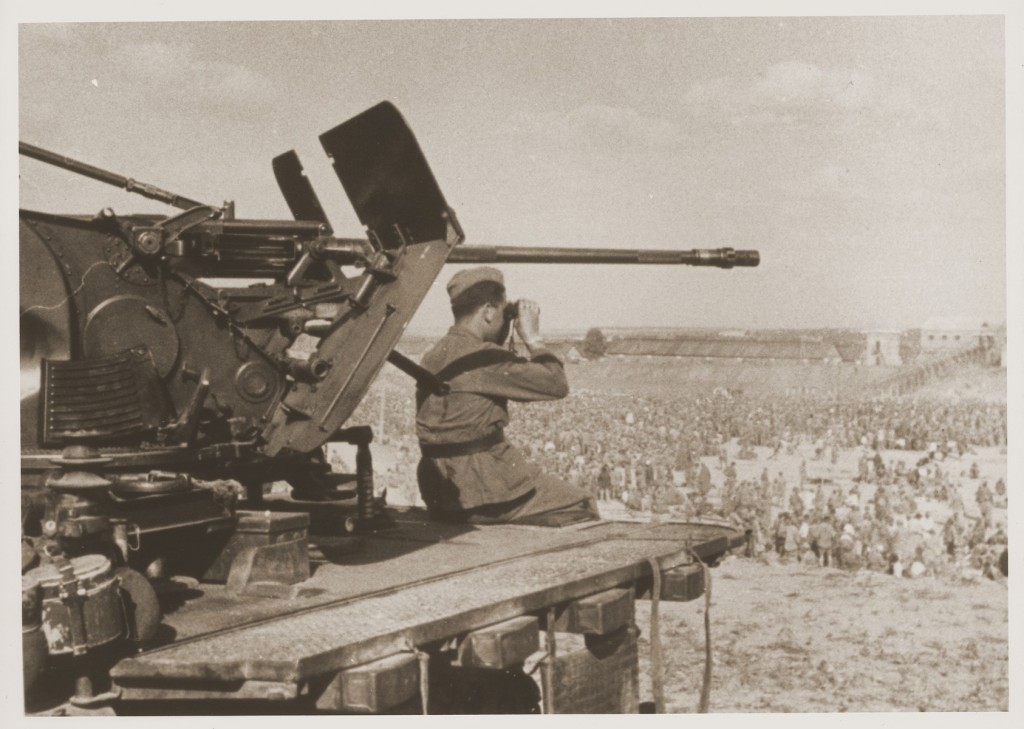
Subcarpathian Rus (Ukraine)
The Transcarpathian region of Ukraine is an area known historically as Subcarpathian Rus. Jews first came to Subcarpathian Rus, then covering the four northeastern counties of the Hungarian kingdom, from Poland in the seventeenth and eighteenth centuries. They were fleeing the Chmielnicki massacres. Jewish immigration into Subcarpathian Rus increased after the Partitions of Poland in the late eighteenth century.
The Region
The conservativism and traditionalism of the Jews of Subcarpathian Rus resulted from the underdeveloped character of the geographically isolated region. It was the most backward and impoverished region in all of pre-World War I Hungary and interwar Czechoslovakia. The majority of the population were peasants. Even a large percentage of the Jews were engaged in manual and agricultural labor. Approximately 80 percent of the region's Jews lived in small towns or rural villages. Jewish residents of the two large towns of Munkacs (Mukachevo) and Ungvar (Uzhhorod) made a living in petty commerce and crafts; a large number, however, were unemployed. Indeed, the Jews of Subcarpathian Rus were among the poorest in Europe.
Subcarpathian Rus during World War I
During World War I, Subcarpathian Rus was occupied by Russian troops until 1917. As a result of the Treaty of Trianon in 1920, the region formally became a part of the new Czechoslovak Republic. Its 90,000 Jews, 12 percent of the population, were granted official minority status along with all the other Jews of Czechoslovakia.
Language and Schooling
In Subcarpathian Rus, there was no obvious dominant majority culture or language. Partly due to the late-nineteenth century official policy of Magyarization (assimilation to Hungarian culture) and partly due to some Hungarian Jews' enthusiastic adoption of Magyar culture, many Jews learned Hungarian in state schools and some even began speaking it at home. Many also had a basic knowledge of Ukrainian, which enabled them to communicate with their neighbors and customers. However, the vast majority of Jews continued to speak Yiddish into the interwar period.
Those who wished to send their children to modern schools instead of the traditional Jewish heder could choose between Ukrainian, Czech, Hungarian, and modern Hebrew educational systems. Some lower and middle-class Jews sent their children to Ukrainian schools so they would learn the local language, and in the 1930s other Jews began to send their children to Czech-language public Jewish schools. Some Jewish families continued to have their children educated in Hungarian schools, a legacy of the acculturation that many educated, middle-class Jews had embraced in Hungary during the reign of the Habsburg monarchs.
Although some Czech Jews characterized themselves as "national" Jews and even Zionists, most were thoroughly assimilated into Czech and German cultures. Only in Subcarpathian Rus were Hebrew-language Zionist schools established and made viable, including one gymnasium (high school) in Munkacs. Chaim Kugel, director of the gymnasium, was a leader of the Czechoslovak Jewish Party and elected to the national parliament in 1935. The national government, though officially committed to Jewish cultural autonomy, did not at first support the Zionist schools. Nevertheless, the Czechoslovak President Thomas Masaryk made a show of support by giving a personal donation to the Zionist schools in the amount of 10,000 crowns.
Orthodoxy and Zionism
Led by Rabbi Shapira of Munkacs, Orthodox leaders in Subcarpathian Rus attempted to create a central Jewish bureau that would coordinate all the religious congregations in the region. This would have given them a great deal of power over the Jewish population, and the Zionists and integrationist Jews opposed the establishment of the bureau.
Zionism came relatively late to Subcarpathian Rus. Munkacs became the Zionist center for all of Subcarpathian Rus, and its Hebrew schools were the model for those founded in other towns in the region. The national Zionist organization chose Subcarpathian Rus as the site for its Hebrew-language summer camps. Graduates of the Munkacs Hebrew gymnasium went on to become active Zionist university students and Hebrew teachers throughout Czechoslovakia.
Economy
The interwar period saw a departure of young Jews from the countryside to the towns and cities, as well as to western Czechoslovakia. Almost all (94 percent) of the commerce of Subcarpathian Rus was in the hands of Jews. However, between the two world wars the economic situation of the Jews in Subcarpathian Rus declined as Ukrainians of peasant background sought entry into the middle class and commercial professions, thus competing in occupations traditionally held by Jews. The establishment of peasant cooperatives and an influx of cheap manufactured goods from industrialized western Czechoslovakia also hurt local Jewish economic interests.
The Great Depression further aggravated the situation; many Jews lost their jobs and young Jews had no hope of employment. To make things worse, some non-Jews blamed the "alien" Jew for many of the economic ills of the time (for example, Jewish shopkeepers were accused of driving down prices). In 1935, Chaim Kugel, former director of the Munkacs gymnasium and then Jewish Party delegate to the Czechoslovak Parliament, gave a speech during a parliamentary debate: "…It is completely impossible to adequately describe the poverty in the area. The Jews… are affected equally along with the rest…. I strongly wish to protest any attempt to blame the poverty of the Subcarpathian Ruthenian peasantry on the Jews" (Quoted in Sole, "Subcarpathian Ruthenia, 1918-1938," in The Jews of Czechoslovakia, vol. 1, p. 132). Government policies targeted Jews, who bore a heavy share of taxes and had difficulty getting high civil service positions.
Annexation by Hungary
In 1939, in the wake of the dismemberment of Czechoslovakia, Hungary seized and annexed Subcarpathian Rus.
Despite the Hungarian introduction of antisemitic legislation, Subcarpathian Rus remained a relative haven for Jews until the Germans occupied Hungary in 1944.

